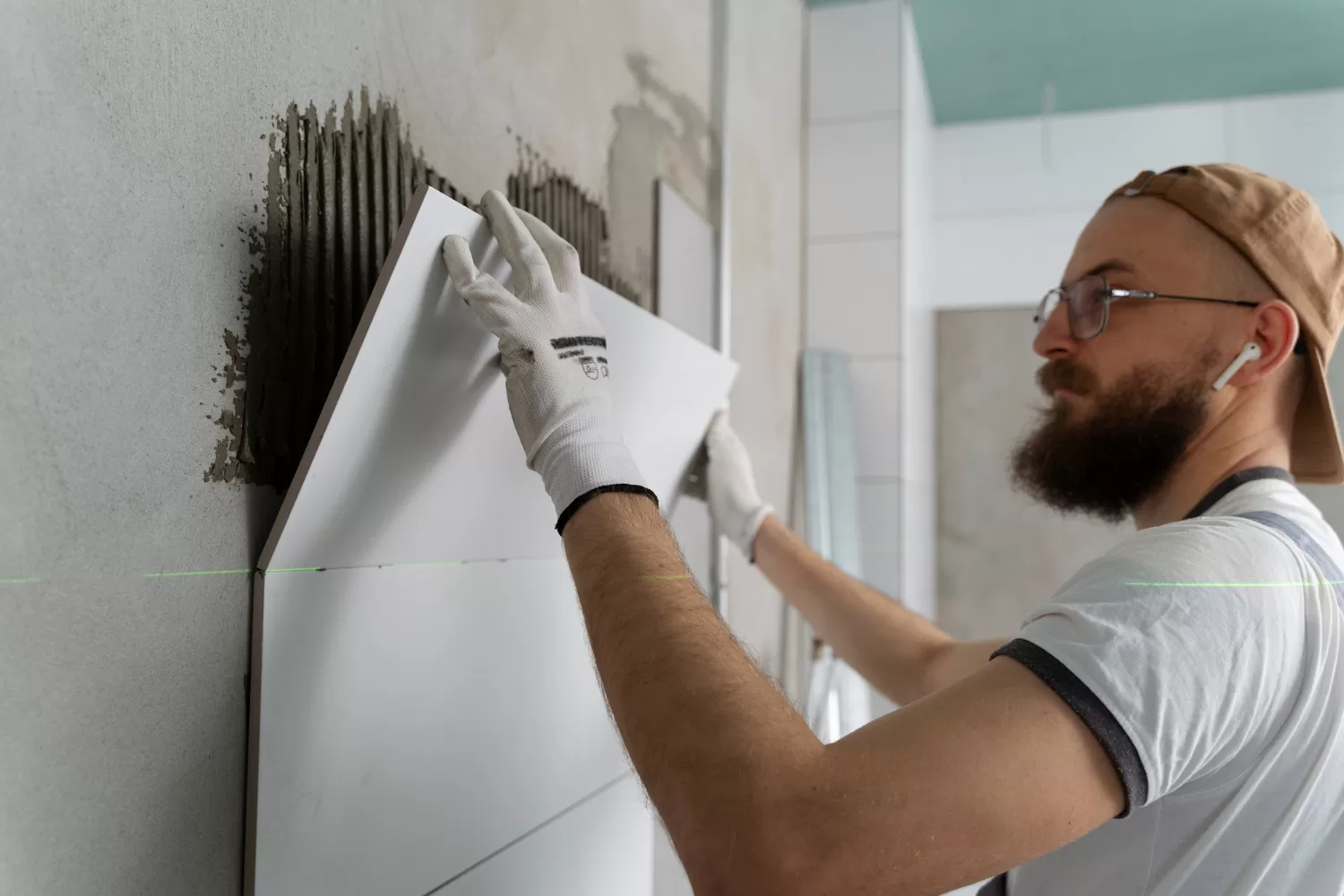It’s easy to jump to the worst possible conclusion when spotting, say, tell-tale bubbles and/or peeling wallpaper, or perhaps even a dank and ugly patch of mould: that your property is riddled with damp! However, this isn’t always the case, so you needn’t despair or start scouring your savings account.
Even if you believe that the damp situation is catastrophic and that remedying the problem will come at the expense of that trip of a lifetime you’ve been hankering after, a damp-proof course may be more affordable than you think. The good news is that it’s rare indeed that damp is as bad as it initially seems.
Of course, in many cases, the wallpaper will have to be stripped and the wall most likely re-plastered. However, the masonry itself will be retrievable – it simply needs professional attention and the chance to dry out. Luckily, the team at CS Damp Proofing is here to help explain how dealing with damp needn’t break the bank.
What is meant by damp?
There are three main factors responsible for damp: condensation, rainwater and rising damp, and it’s the latter phenomenon that we’re concerned with here. Condensation is the conversion of a vapour/gas to a liquid, while penetrating damp refers to the lateral transfer of moisture through a material (often caused by rainwater and clogged up drains).
So, what is it rising damp? Put simply, rising damp is the common term used for the upward movement of groundwater in the lower sections of walls by a process called capillary action. It’s characterised by a “tide mark” on affected walls, caused by salts contained in the groundwater. When the water evaporates, the salts crystallise and can cause plaster to deteriorate.
With water continually wending its way up, the situation will perpetuate (a side-effect of rising damp, incidentally, is that a damp wall will lose more heat). Rising damp can affect both internal and external walls as the water is drawn up from the groundwork instead of being transferred laterally.
As a result, rising damp can be found even within rooms with no external walls. Luckily, however, rising damp cannot occur on any other floor of a property than the ground floor. If damp is affecting the upstairs of a property, it’s likely this won’t be rising damp.
What causes rising damp?
Put simply, rising damp often occurs when a property’s damp-proof course (DPC) becomes broken/fails or is incomplete/not properly installed. While most older properties come with damp proofing in the form of a layer of slate between the brickwork, well-built modern homes typically have a synthetic damp-proof course.
This synthetic DPC is installed roughly 15cm above ground level and is designed to create a barrier that water cannot pass. However, if this barrier becomes broken or isn’t properly finished, moisture can climb its way up the wall (a process known as bridging), resulting in rising damp.
Another cause of rising damp can also be poor drainage. Any qualified surveyor conducting a rising damp survey report will therefore also check for standing water in crawlspaces and/or the basement. Without proper drainage removing this water away from your property, it will simply continue to build up leading to the spread of moisture.
Rising damp can also be caused by the raising of the ground level next to an external wall. If the ground level has been raised above the air bricks and they have become blocked or the ground level now sits above the original damp-proof course, then moisture can find a way up and into the walls.
What are the signs of rising damp?
Despite being a relatively rare type of damp, rising damp can still be found throughout properties and must be correctly diagnosed to ensure effective treatment. To make sure the tell-tale signs of rising damp are spotted, we always recommend reaching out to a qualified damp-proofing surveyor.
A qualified surveyor will be able to conduct a thorough rising damp survey of your home or business premises. This will include an analysis of the salts to ensure accurate diagnosis and therefore treatment as rising damp can sometimes be mistaken for similar conditions such as condensation or penetrating damp.
Some of the common rising damp signs include:
- Salt tide marks
- Dark, damp patches on walls
- Wet brickwork/masonry (not just the plaster or wallpaper)
- Staining of wall coverings
- Peeling wallpaper
- Blistering paint
- Damp smell around the property
- Discoloured and fragmenting plaster
- Decaying timber (this might include skirting boards, floor boards or floor joists)
How do surveyors check for damp?
Alongside conducting a visual check of the property and looking for all the signs of rising damp mentioned above, surveyors will also come equipped with a handheld moisture meter. A moisture meter, as the name suggests, is used to indicate the moisture level of the walls and identify whether it’s higher than it should be.
A moisture meter, also known as a moisture detector, can measure the percentage of water in a variety of different substances. As rising damp only affects the walls of a property, a damp-proofing surveyor will use the meter on the walls to assess the extent of the damage. Professional damp surveyors should also check the drainage.
Why is rising damp a problem?
Due to all the cosmetic issues listed above that can come with rising damp (such as fragmenting plaster and decaying timber), living in a property with this problem can be unpleasant to say the least. It can ruin freshly decorated homes, create a musty and unwelcoming smell, and even lead to structural damage.
So, if you want to avoid spending your hard-earned money and time on rectifying mould, blistering paint, peeling wallpaper, and damaged render, then treating rising damp is essential. We explore the various ways that rising damp can be remedied in more detail below.
How is rising damp treated?
Rising damp can be treated using a variety of technique and materials. The right damp-proof treatment for your application will depend on the severity of the damp and its location. As every case of damp is unique, we offer a selection of damp-proofing solutions, including:
- Removing the surrounding soil or bridging material to be a minimum of 150mm below the existing damp-proof course
- Injecting a chemical damp-proof course
- Replacing any damp or rotten flooring
- Removing and replacing any plasterwork, skirting boards, radiators etc. if necessary
However, it’s worth bearing in mind that the competence and experience of the person(s) investigating the problem can affect the result and even lead to misdiagnosis. If the wrong type of treatment is prescribed, you could end up spending more than necessary or potentially opting for an ineffective damp-proofing treatment.
By way of illustrating, we explained above about how salts can form causing plaster and wallpaper to peel. This might be a feature of rising damp but other phenomena (such as heat from a fire) can also cause salts in masonry to crystallise – resulting, perhaps, in damp-proof course work that is completely unnecessary.
To help prevent the overall damp-proof course cost from rising, it’s therefore vital that you seek out a company with both years of invaluable industry experience and an expert level of damp-proofing knowledge.
What are the different types of damp-proof courses?
To give you an idea of the different types of DPCs available to treat rising damp, we’ve listed some of the various treatment options on the market right now. From chemical damp-proofing that’s on offer at CS Damp Proofing to more specialist electro-osmotic damp-proof courses, we explore six of the key damp-proofing solutions below.
Electro-osmotic damp-proof course
To prevent rising damp using an electro-osmotic damp-proof course, a series of titanium anodes are inserted into the masonry. These anodes generate a very low voltage electric charge that helps to repel water back down the walls and into the ground. Well-suited to walls with a thickness of 600mm or more, this form of damp-proofing is commonly used on older, more historic buildings.
Chemical damp-proof course
A relatively easy form of damp-proofing to install, chemical damp-proofing involves the injection of a silicone-based formulation into a series of holes within a wall. Injected at no less than 150mm from the base of the wall, these chemicals create a water repelling layer that prevents the capillary action of water climbing up the walls from the groundwork.
Pressure grouting damp-proof course
Pressure grouting involves drilling holes into certain areas of a building and then using a cement mortar/concrete mixture to fill the cracks and voids. An inexpensive and practical solution used to combat penetrating damp, pressure is used to fill the cracks and is maintained to ensure efficacy of the treatment.
Membrane damp-proof course
A damp-proof membrane (or DPM) is a type of membrane material that’s often made from plastic and is installed underneath a concrete slab. The primary purpose of this damp-proof membrane is to provide reliable damp-proofing for the concrete slab, effectively fending off moisture.
Integral damp-proof course
Damp-proofing using an integral damp-proof course involves combining certain compounds into either the mortar or concrete during the construction/mining process of the building. This type of damp-proofing helps to prevent the transmission of damp as it fills voids in the concrete, creating a physical barrier.
Cavity wall damp-proof course
Cavity wall damp-proofing simply refers to using a cavity wall to separate the inner walls from the outer walls. Most commonly installed to help prevent penetrating dampness caused by rainwater, the cavity wall creates a physical barrier that inhibits dampness transferring from the exterior walls to the interior walls.
Which rising damp treatment is right for your home?
Ultimately, there is no one-size-fits-all treatment for rising damp in properties. Instead, it’s always best to ask a qualified and certified surveyor to conduct a damp-proofing survey. The results of this survey will help you to determine the best type of treatment as well as which areas require attention.
How much does damp-proofing cost?
As for the damp-proof course cost, it tends to cost roughly £60 per linear metre +vat. For example, if you wanted to invest in a damp-proof course for an average-sized living room (four by four metres), the cost would be around £270 + vat per wall. However, every project is unique and would require a bespoke consultation.
How long does damp-proofing take?
The majority of the jobs we complete here at CS Damp Proofing take no longer than a couple of days from start to finish. However, this will vary depending on the type and degree of damp-proofing required throughout the property. Rest assured, we’ll always let you know the length of the damp-proofing treatment before starting the job.
Why choose CS Damp Proofing?
At CS Damp Proofing, we pride ourselves on being damp-proof specialists with years of vital experience. Our professional and knowledgeable team is made up of qualified and certified surveyors that know everything there is to know about the latest structural waterproofing and remedial treatments.
Based in North Yorkshire, we serve properties throughout the Yorkshire and Humber area, and can also travel to locations in the Tees Valley towards the North East of the UK. No matter where you’re located, if you want to keep your property in prime condition, please feel free to reach out today.
Contact CS Damp Proofing today!
Keen to find out more about the available damp-proofing services at CS Damp Proofing? Please don’t hesitate to get in touch with our team! You can either give us a call on 01765 452510. Alternatively, you can also use our contact page to get in touch – we look forward to hearing from you!

